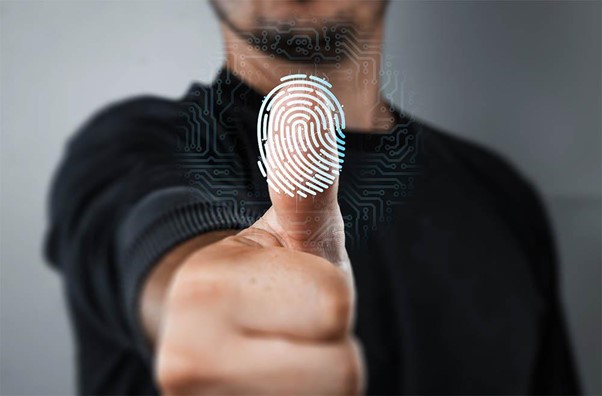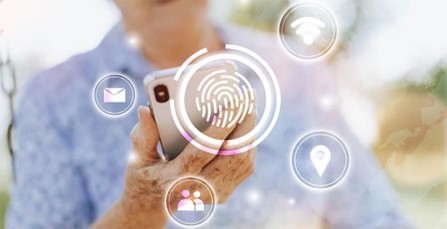- Alba Ranis
Web3 digital identity is here
The digital identity is the set of data and actions that we store at the digital level, which help to have a pretty clear idea of the profile, tastes and skills that are shown of a person and how this will be seen by other users in cyberspace. Would you know how to list everything that makes up your digital identity?

On the one hand there are the data, such as names, users, account numbers, addresses, medical records, transactions … and on the other hand there are the actions you perform, the places you go, the movies you watch, the recipes you visualize, the links you click, your contacts, your publications … In addition, the information that does not appear on the Internet, also says a lot about you, for example the fact of not having social networks. And finally, it should be noted that the opinions of third parties are also part of this digital identity.
Nowadays, digital identity has become very important, the line between the real and the digital is increasingly blurred, with the aim of automating and streamlining the processes of verification and data management simultaneously. It is very common to complain about how tedious it is to have to repeat data over and over again when we are about to make a record or the difficulty for some to manage simultaneously and in isolation.
The vast majority of people feel the need to take control over our data, and this stems from the need to avoid personal data leaks and the danger of having to give away our data without a protection to back us up.
The development of projects to manage digital identity data based on the technology that predominates in the Web3, is becoming more and more common, since this technology seeks to give people control over their identity and not to third parties.
The decentralized and self-managed Digital Identity
The growing interest of the user in the management and recovery of personal identity ownership is making the blockchain be seen as a solution to avoid cases such as Equifax, where a cyber-attack gained access to the personal data of approximately 145 million customers, obtaining at least 209,000 credit card credentials.
Examples like this are becoming more and more popular as well as cases of pishing or identity theft, in which actions range from accessing our bank details and stealing money to committing crimes in our name.
The web3 sheds light on the matter: the user, together with some data, can have control of his data in a decentralized way that uniquely identifies him to verification systems in the network where he wants to be, although it is a huge challenge and we are still at a fairly early stage.

Agility and security in online services
Nowadays service providers are more present in the online world, which leaves us in the dilemma of who we provide our data to, ranging from personal to financial profiles, and that happen to be in a multitude of databases, many of them with little security. This dilemma is solved by the web3 through its blockchain technology, which helps us to have greater control and ownership of our data, thus maintaining security when accessing any type of online service.
Access to public services
Many citizens will agree that the Administration’s digital processes are the most tedious and the worst performing. This is due to the great complexity involved in managing such large amounts of information and compliance with many standards, yet currently only about 16% of public organizations have initiated a digital trust program in Spain.
But there is good news, the Government has set out to improve Digital ID, and has developed a plan to adapt the Public Administration to the current challenges.
The goal is to make Digital Public Services more secure, agile and efficient, and this necessarily involves Blockchain technology, which greatly simplifies the User Identification Process or KYC.
Trade with our own personal data
A few years ago (although it seems to be many) we were surprised to be able to access incredible applications and social networks that provided us with entertainment for free. Today we know that it wasn’t free at all, and that the product was us, because we pay with our data. They call it the data economy, and although we all think of the 2 big ones, Google and Facebook, companies from many fields know us almost as well as we know ourselves. Why do they want our data? What do they do with it?
They want them for two reasons, one, to study our behavior, what we like, what we are afraid of, what we are worried about, how we eat, if we feel lonely, etc. …
On the other hand, they commercialize this data, they share it with third parties in exchange for a profit. With all this information they create profiles, some of them harmless, to receive ads for shoes or natural cosmetics while you check Instagram, for example, but there are some less nice ones, such as profiles that trace medical histories to raise the price of insurance, or to be excluded from some services.
However, companies cannot market or process data without informing the user beforehand, even if this information goes largely unnoticed, and the user signs it shamelessly.
What is a truly Decentralized Identity?
When we talk about total control over our data, we are talking about Self-Sovereign Digital Identity, a digital mechanism that facilitates data sharing, while keeping it safe, with the user knowing at all times who is accessing his data, and for what purpose. This is possible because the data is always on the user’s device, and it is the system that creates credentials that validate the data required for multiple purposes.
The key to success lies in Interoperability, without it we fall into the same error, and each solution will be valid for a specific platform, on the contrary, if we manage to create interoperability mechanisms and unknown networks that trust each other, we will be able to operate with the same digital identity in several networks, and then yes, we will have decentralization, security, and simplicity.
